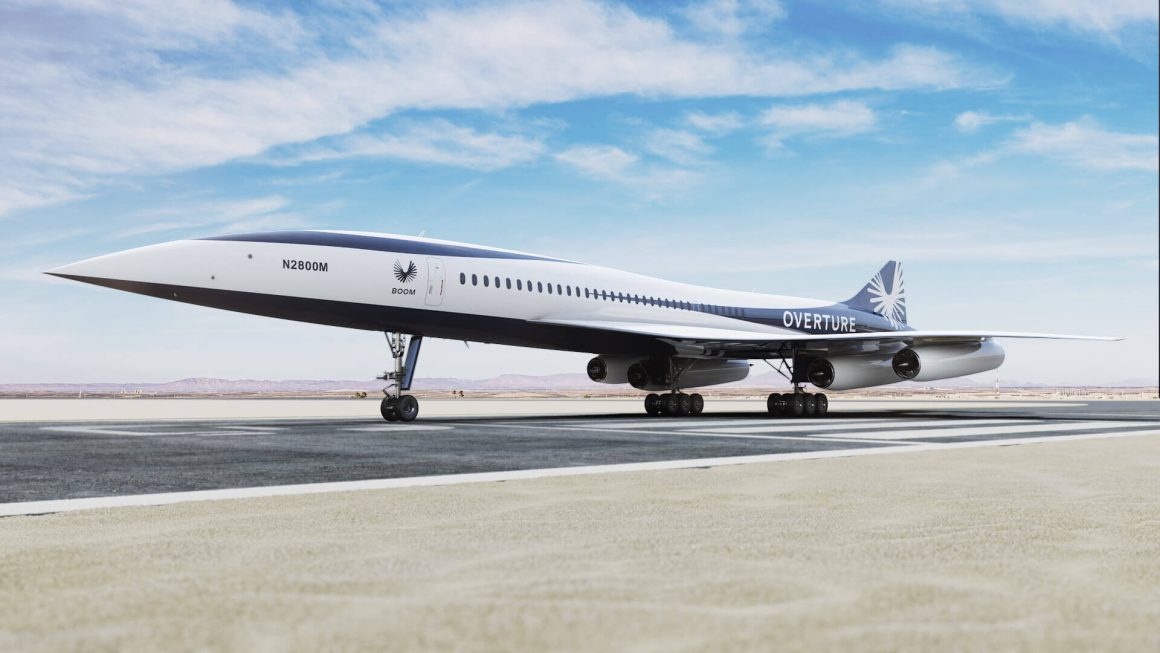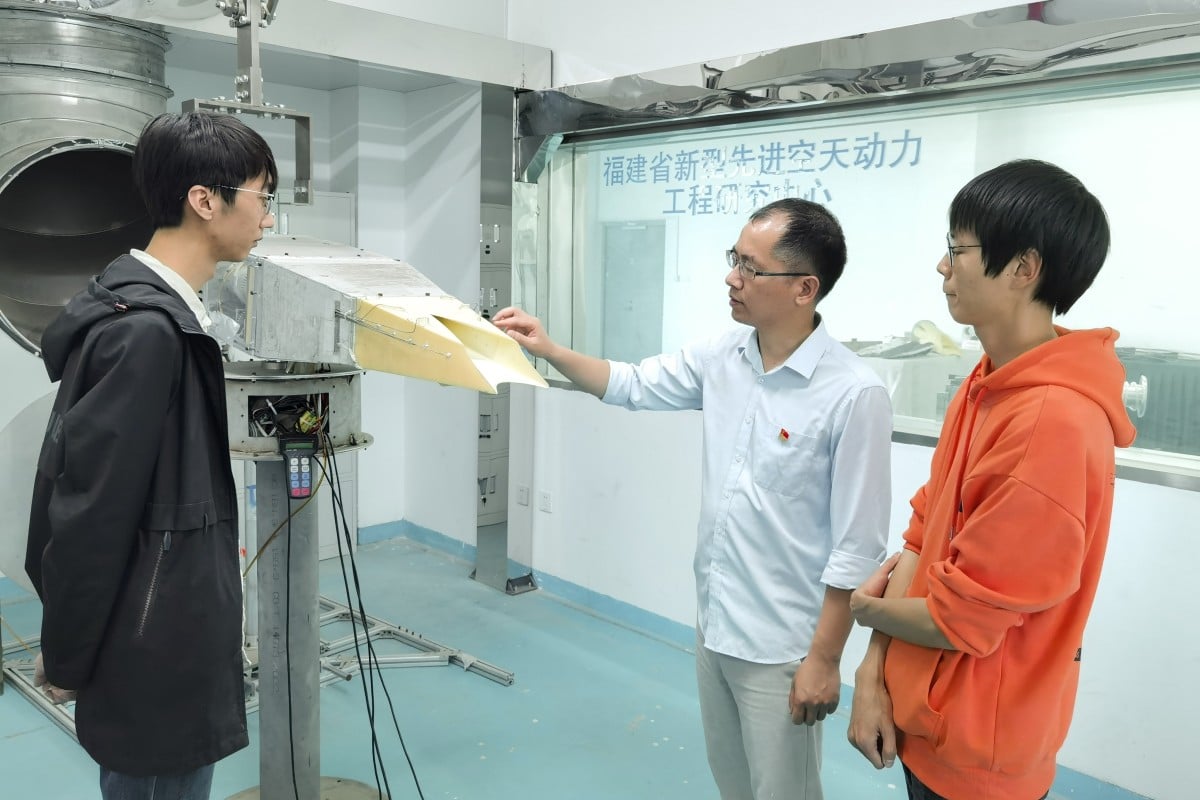The Concorde was said to be ahead of its time in the 20th century, achieving a speed of 1,354 miles per hour — twice the speed of sound. The Concorde was capable of flying from London to New York in under three hours. It was discontinued in 2003, and none of the 20 Concordes made are still flying today.
Some passengers are curious if there are plans for an even faster jet, and many companies from around the world are working tirelessly to achieve this milestone. Here are four revolutionary jets looking to make history in the future.
Boom Overture: The Self-Proclaimed ‘ World’s Fastest Airliner’

| Top Speed | 1,304 miles per hour |
| Capacity | 64 to 80 |
| Range | 4,250 nautical miles |
| Planned Year for Service | 2029 |
This first jet already has some heavy intrigue by popular airlines around the globe. Made by Boom Supersonic, the Overture has been in development since 2016 under its project name ‘XB-1’.
Boom promises the Overture jet to achieve a Mach speed of 1.7 above water, and can carry a range of 64 to 80 passengers in a business configuration. United Airlines states an overture flight from Newark to London would take three and a half hours. Also having been ordered by American Airlines and Japan Airlines, this could be one of the more accessible high-speed jets one would board in the near future.
Former Concorde Pilot Mike Bannister got to pilot the Overture during a flight deck test and had this to say about Boom’s promising supersonic aircraft:
“I’ve long believed that Overture is the rightful successor to Concorde…After experiencing Overture’s flight deck, which is incredibly well designed and delightful to fly, my excitement and enthusiasm for this aircraft has only intensified.”
Boom is also developing its own engine known as ‘Symphony’ with StandardAero assisting in both production and testing in San Antonio, Texas.
Founded in Denver, Colorado, Boom’s Overture aircraft will be assembled in Greensboro, North Carolina. Boom press releases indicate that the Overture may be able to fly with passengers starting 2029.
Venus Detonation Ramjet: Faster than the Concorde?
| Top Speed | 4,603 miles per hour |
| Capacity | Unknown |
| Range | 5,000 miles |
| Planned Year for Service | Unknown |
While Venus Aerospace manufactures its own jets, the company is creating a buzz around a new hypersonic engine. The Venus Detonation Ramjet 2,000lb (VDR2) promises to become a ‘major breakthrough’ in fast travel.
The VDR2 comprises just one simple engine that can hope to achieve up to 3,000 miles per hour, or Mach 6, on its aircraft. This versatility allows other manufacturers to potentially build their own supersonic jets with a capable engine such as the VRD2.
The Texas-based company has partnered with Ohio company Velontra to develop this new engine. Velontra Chief Operating Officer Eric Briggs addressed the media on this partnership:
“We can’t wait to dig in, make the first one fly, and ultimately perfect an engine concept that has lived mostly in textbooks but never as a production unit in the air.”
Venus Aerospace is hoping to give the engine its first drone-operated flight in 2025.
Venus also plans to begin production of the Venus Stargazer M400 some point in the 2030s. The Stargazer is slated to seat a dozen passengers at a time and achieve a Mach 9. At 6,905 miles per hour, such aircraft would fly from New York to Tokyo in just an hour.
Nanqiang: From China to Los Angeles in Just Two Hours?

| Top Speed | 4,603 miles per hour |
| Capacity | 10 |
| Range | ‘several thousand kilometers’ |
| Planned Year for Service | 2035 |
China also has plans to develop a hypersonic jet that may also achieve Mach 6. The Nanqiang No. 1 is said to fly anywhere in the world in two hours or less — “just as convenient as riding your local bus.”
Having started in 2019, the project is taking place at an unnamed location inside China’s Fujian Province. Lead project scientist Yin Zeyong claimed the Nanqiang will ‘change human civilization’.
The Nanqiang’s engine will be a combined cycle engine. The lab dubbed it the “MUTTER” engine, standing for ‘”‘multi-ducted twin-turbines ejector-ramjet’. The engine will also be equipped with two supplemental turbine engines.
In terms of seating capacity, the Nanqiang is currently planned to only have 10 passenger seats.
The similarities with Venus Aerospace don’t stop there. China will also plan to conduct a drone-piloted flight of the Nanqiang in 2025. The lab projects 2035 as a tentative date for when the plane will officially be ready to fly passengers.
Will the Yunxing Be First to Fly?

| Top Speed | 3,045 miles per hour |
| Capacity | 70 |
| Range | Unknown |
| Planned Year for Service | 2027 |
Last month, Chinese organization Space Transportation, also known as Lingkong Tianxing Technology, completed a test flight of a prototype jet known as the Yunxing.
While not promised to be as fast as the Nanqiang No. 1 or Stargazer M400, the Yunxing will still look to achieve speeds of up to 3,045 miles per hour. At Mach 4, the Yunxing is said to be twice as fast as the Concorde.
As a tradeoff for slightly slower speeds compared to the other “Mach 6” jets, the Yunxing will be able to carry as many as 70 passengers at a time. A hypothetical London flight to New York would take the Yunxing under two hours.
The Yunxing will also be able to fly at an altitude of over 65,600 feet. Passengers who fly as high as 50,000 feet are able to see the Earth’s curvature.
Despite the successful test flight, Chinese professors claim more fine-tuning can be done to make further improvements on the Yunxing. Despite this, Space Transportation is aiming to get the Yunxing in service by 2027. This is a good handful of years before we could get to see the Stargazer M400 or Nanqiang No. 1.
